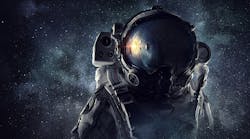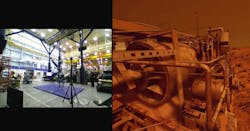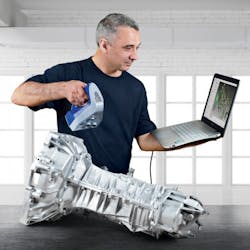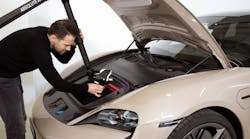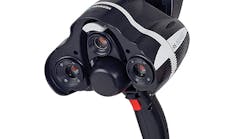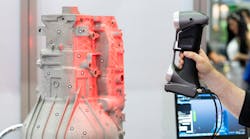On July 20, 1969, three men made history by being the first humans to set foot on the moon. Since then, humanity continues to drive forward in the fields of space exploration, technological development, and historic preservation.
One of these industry-defining technological developments is the growth of 3D scanning, which has the unique ability to impact multiple aspects of the space industry. With the help of 3D scanning, engineers have been able to assist in preparations for space travel, scientific research during flight, as well as space preservation work, while continuing to share each moment of success with the world.
Strategic Training & Preparing for the Voyage
Preparing for a voyage to space is no easy feat. Years of tactical planning and training go into a single trip through the atmosphere. To help prepare the next class of space travelers, NASA engineers have taken advantage of 3D scanning to make the training experience feel as realistic as possible.
In 2015, NASA built its Hybrid Reality Lab, which combines virtual reality technology with 3D objects to create realistic visuals together with tactile feedback. This state-of-the-art technology provides astronauts with a stronger, far more realistic training experience.
Featuring the newest technology, the lab uses off-the-shelf VR headsets, Unreal Engine 4, and NASA-specific content to create a complete training environment. While in the Hybrid Reality Lab, astronauts can train with specific 3D scanned tools in common situations that are bound to occur on a voyage.
A space drill called the Pistol Grip Tool (PGT), used for drilling bolts, and an X-ray fluorescence (XRF) tool, used to determine rock and soil composition, are just a few of the existing space assets that have been uploaded into the program.
These tools were scanned using the Artec Space Spider, to produce highly realistic textured models and import them into a virtual environment.
Scanning in Space
Initially developed for the International Space Station, Artec 3D created the Artec Space Spider, a high-resolution 3D scanner based on blue light technology. Featuring high-grade electronics, the scanner is also built with powerful temperature stabilization to ensure proper usage in near zero-gravity environments.
This combination of technology not only allows the scanner to reach maximum accuracy in three minutes, but it also ensures long-term repeatability in data capture, since the accuracy rate of the device is not affected by fluctuations in environmental conditions.
Preserving History
Another aspect of 3D scanning in space could revolve around digitally preserving samples and environments that are encountered. 3D scanners are a common tool for archeologists who use the tool to digitally capture their progress during digs.
The next time astronauts return to the moon, it would make sense for this to be a key instrument in their toolbox. Rock samples and other aspects of the moon’s surface could then be digitized and sent back to mission control for further analysis.
Preservation also extends beyond specific missions.
This year, Neil Armstrong’s newly restored spacesuit went back on display after not being showcased for nearly 13 years. In 2015, restoration of the suit began, with 3D scanners digitally capturing the suit’s gloves, before moving to scan the inner and outer surfaces of the entire spacesuit. Roughly 50 images were used to record the suit’s internal and external characteristics.
A modular, 3D-printed figure was then manufactured to support the suit while on display and to serve as structural support for an air circulation system designed to reduce harmful gases released from the suit’s materials as they break down over time.
However, it’s not just about preserving the suit; the museum also digitized it to ensure that its memory remains alive for years to come. Structured light scanning was used to map the suit’s basic structure and color.
Engineers then used laser arm scanning to record more detailed surface geometry, triangulating and connecting multiple points to map the suit’s surface. Combining the data with scanned images enabled the team to create a 3D animation of the suit.
Sharing Humanity’s Greatest Journey
Digitizing the Apollo 11 landing serves as a resource for many research studies and educational opportunities. In addition, the 3D scanning of the ship also provides a more interactive experience.
This year, the Smithsonian Channel launched an augmented reality game for those wanting to experience this great moment in history for themselves. The immersive app uses augmented reality to recreate the full timeline of the Apollo 11 mission, allowing users to relive history.
Using a mobile phone or tablet, participants can set up a portal to the moon wherever they are and step into a projection surrounded by real artifacts from the mission that were 3D scanned to precision and placed in the app for a truly realistic experience.
In addition to its application in space development, 3D scanning is similarly being used by manufacturers and engineers across the globe. Whether it is preparing an astronaut for space or reverse engineering a replacement part, the industry is continuing to be motivated by the advancement of this technology.










